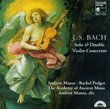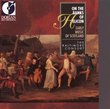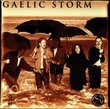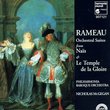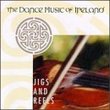| All Artists: Italian Anonymous, Anonymous 4 Title: Miracles of Sant'iago: Music from the Codex Calistinus Members Wishing: 1 Total Copies: 0 Label: Harmonia Mundi Fr. Release Date: 2/26/1996 Album Type: Import Genres: Special Interest, Pop, Classical Styles: Vocal Pop, Opera & Classical Vocal, Historical Periods, Early Music Number of Discs: 1 SwapaCD Credits: 1 UPC: 093046715625 |
Search - Italian Anonymous, Anonymous 4 :: Miracles of Sant'iago: Music from the Codex Calistinus
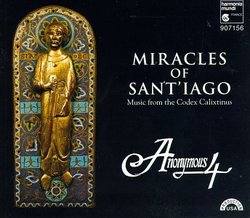 | Italian Anonymous, Anonymous 4 Miracles of Sant'iago: Music from the Codex Calistinus Genres: Special Interest, Pop, Classical
The program is a selection of chant and polyphony taken from a fascinating 12th-century manuscript that includes not only music but also sermons, stories, legends, and "an informative travel guide to the pilgrimage rout... more » |
Larger Image |
CD DetailsSynopsis
Amazon.com essential recording The program is a selection of chant and polyphony taken from a fascinating 12th-century manuscript that includes not only music but also sermons, stories, legends, and "an informative travel guide to the pilgrimage routes through France and Spain." The collection originated in France, but since the late 12th century it has resided in the famed Cathedral of Santiago in Compostela, Spain. In a purely vocal sense, these performances are transcendent: impeccable intonation, no false turns or failed leaps, and an ethereal ambience that is hard to describe with mere words. Musically, this recording features some of Anonymous 4's most engaging repertoire. No matter how many Anonymous 4/medieval music recordings you already own, these four women will still manage to keep you transfixed throughout, bringing you awesomely close to the spiritual essence of these impassioned yet often simple works of religious devotion. --David Vernier Similar CDsSimilarly Requested CDs
|
CD Reviews"Sublime" is an understatement Scott Carson | Athens, Ohio USA | 11/18/2000 (5 out of 5 stars) "Susan Hellauer, Ruth Cunningham, Marsha Genesky, and Johanna Rose have produced what is possibly the most sublime recording I have ever heard. From the first moment of the recording until the last, I was transfixed by their ethereal, uplifting sound, and found myself wanting to run right out and get their other CDs. Every person who is interested in early music will be impressed by their scholarly yet artistic aproach to these texts, and by their first rate performances." The Pilgrimage to St. James's Tomb in .... Giordano Bruno | Wherever I am, I am. | 10/21/2008 (5 out of 5 stars) "... Spain! More precisely, in Galicia, in the northwest corner of Spain, considered in the Middle Ages the End of the Earth, whither the body of the Apostle was miraculously transported. Yet more precisely, in the Cathedral of Santiago (San Diego, Saint James!) in Compostela, the destination of the greatest network of pilgrimage routes in Europe, all crossing southern France, then and now. Yes, now! You can sign up for a Backroads Tour, on bicycle, from somewhere in France to Compostela. Or you can do it the right way, on foot, without reservations, staying in the hostels still maintained by churches along the route. If all this is news to you, google it and read up. The pilgrimage route to Santiago was one of the greatest "information highways" of all history, so what could be more appropriate than an internet search? Recently I reviewed a spectacular recording of Guillaume Dufay's Mass for St. James, sung by the Binchois Consort. Now it seems time to tread backwards a few centuries and towards Compostela, where the Codex Calixtinus is kept. The manuscript is named for Pope Calixtus; where it was prepared is not fully established, but the chant and troped chant in it seem stylistically connected to the Aquitanian monastery of St. Martial. A "trope" is basically an addition to an existing chant, either in the form of embellishments and ornaments or in the form of harmony, in some cases a simple drone, in other cases a complete countermelody. These troped chants of the 12th Century are the birth music of polyphony, the very point at which the route to the future of European music diverged from all the rest of the world. But the music of the Codex Calixtinus is not just a historical curiosity; it's ravishingly beautiful stuff! It was not sung by the pilgrims, though they too had their music. Rather it was sung by the tonsured monks, or possibly by the nuns, of the great convents that dominated economic and cultural life in the 12th Century. Thus you have two choices for hearing it, by an ensemble of women like Anonymous 4, or by an ensemble of men. This CD by Anonymous 4 is one of that ensemble's most polished. It's been deliberately recorded with maximum resonance, to mimic the sound you might hear in a stony chapel of a Romanesque monastery or cathedral. There are MP3 samples, which will be the quickest and most effective way to get a sense of how this music sounds. The choicest piece in the collection is the trope "Congaudeant catholici." As an alternative, you can hear the monks at their devotions on the CD "Vox Iberica I: Sons of Thunder", sung by the ensemble Sequentia. Unfortunately, that CD is not provided with MP3 samples, and is available only used. It is a far more musically masterful performance than that of Anonymous 4, in terms of accurate tuning and artful handling of the rhythmic complexities of unmeasured chant. But the women of A4 do sound awfully angelic. Sequentia, by the way, is the undisputed alpha ensemble for music of the 11th and 12th Centuries, performing things as diverse as Icelandic Eddas, Spanish cantigas, and Hildegard von Bingen." The sirens of heaven abraham aziz lorensozo | 05/24/2001 (5 out of 5 stars) "This album was my entrance to the early music world and because of it i continud exploring the wonderful sounds of ancient times . the magicle voices of this 4 angles will in seconds take you into a time travel to the medieval world with so mutch beauty that u'll say "This must be a dream...""
|

 Track Listings (21) - Disc #1
Track Listings (21) - Disc #1